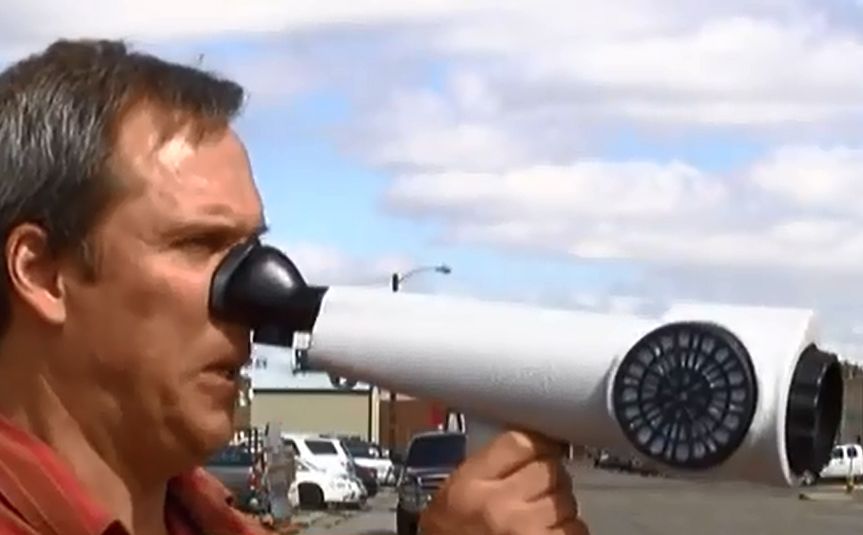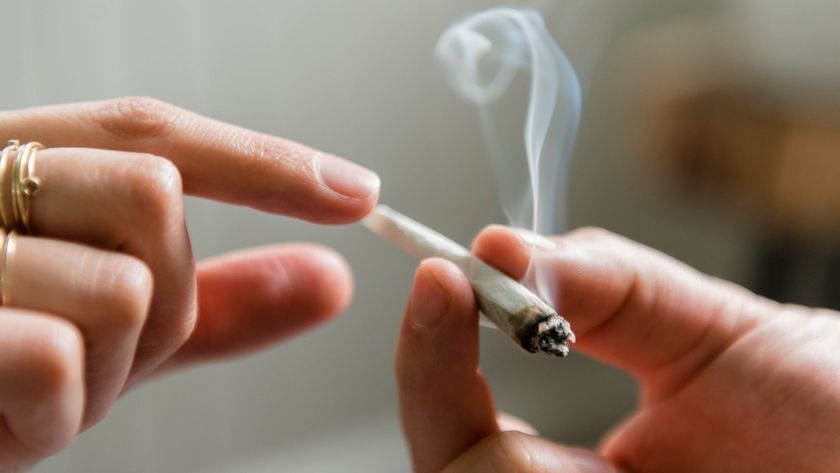Smell Pot? Call the 'Nasal Ranger'!

As governments across the United States and around the world relax their laws against the possession and use of marijuana, a whole new crop of problems related to weed are sprouting up.
Take, for example, the smell of marijuana: Not only are some people offended by the odor of marijuana smoke, but industrial-scale growing operations also perfume the air with the sweet — or skunky, depending on your point-of-view — scent of marijuana plants.
That's become an issue in places like Colorado, which not only legalized recreational use of marijuana last year, but this month passed a statewide measure to tax marijuana sales. To combat the rising tide of complaints about the smell of pot, officials are turning to a high-tech weapon: the Nasal Ranger. [Image Gallery: 7 Potent Medicinal Plants]
Ben Siller, an investigator with the Denver Department of Environmental Health, has made a career sniffing out odor complaints, from wood-burning pizza restaurants to dog-food manufacturers. His weapon of choice, according to the Denver Post, is the Nasal Ranger, a field olfactometer designed to gauge the intensity of odors.
Sniffin' sticks
Looking like a narrow bullhorn, the Nasal Ranger — sometimes called a "nose telescope" for its ability to suss out odors — works by pressing the narrow end up to the user's nose. The interior is coated with Teflon to resist residual odor buildup. When the user inhales, air enters the device through carbon filters at increasing degrees when a dial is turned up at the wide end.
When the user detects a stench, the numerical reading on the dial is noted. In Denver, a violation occurs when the offending odor is at a 7:1 ratio, i.e., when one unit of odor is detectable per every seven units of air in the Nasal Ranger.
Sign up for the Live Science daily newsletter now
Get the world’s most fascinating discoveries delivered straight to your inbox.
The Nasal Ranger has been used to investigate odor complaints against landfills, manufacturing plants and oil refineries. Users must first pass an odor sensitivity test, which uses "sniffin' sticks" — small pens that contain different concentrations of odors — to make sure a prospective Nasal Ranger user has a sufficiently sensitive sniffer.
"I had an old guy call, complaining about this unusual odor whenever he drove past Mississippi [Avenue] and Santa Fe [Drive]," Siller told the Post. "I knew right away what it was, and told him that it was marijuana. His reaction was, 'What?'"
America mellows out
This local concern is likely to become a nationwide issue as more cities and states decide to mellow out their pot legislation. Fifty-eight percent of Americans say marijuana should be legal, according to a Gallup survey released in October, compared with 39 percent who oppose legalization. This is a dramatic shift from earlier surveys, which found that only a small minority supported legalization.
Citizens of Portland, Me., voted this month to legalize marijuana use, and remove penalties for possession of less than 2.5 ounces (71 grams), for those 21 and older. In addition to Colorado, Washington state also legalized recreational use of marijuana, and several other jurisdictions permit medical use of marijuana.
These legalization moves don't come without problems, however: Some sources in Colorado are reporting an increased use of pot among minors, according to the Post, and law enforcement officials in Colorado report that deaths involving drivers who tested positive for marijuana (and not alcohol) increased 114 percent between 2006 and 2011, according to the Seattle Post-Intelligencer.
Smells — whether from marijuana or other sources — remain a tricky thing to nail down.
"Odor can be subjective," Denver City Council President Mary Beth Susman told the Post. "It's hard to legislate odor. The strength that is required to register on the Nasal Ranger is something we need to look at. I also wonder if people will get used to the smell and the dislike of it now may change over time."
Follow Marc Lallanilla on Twitter and Google+. Follow us @livescience, Facebook & Google+. Original article on LiveScience.












